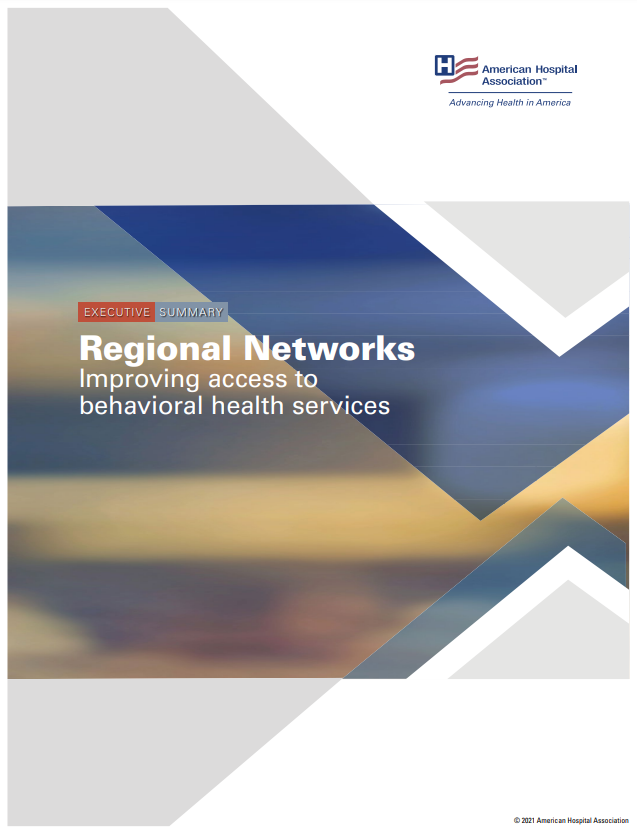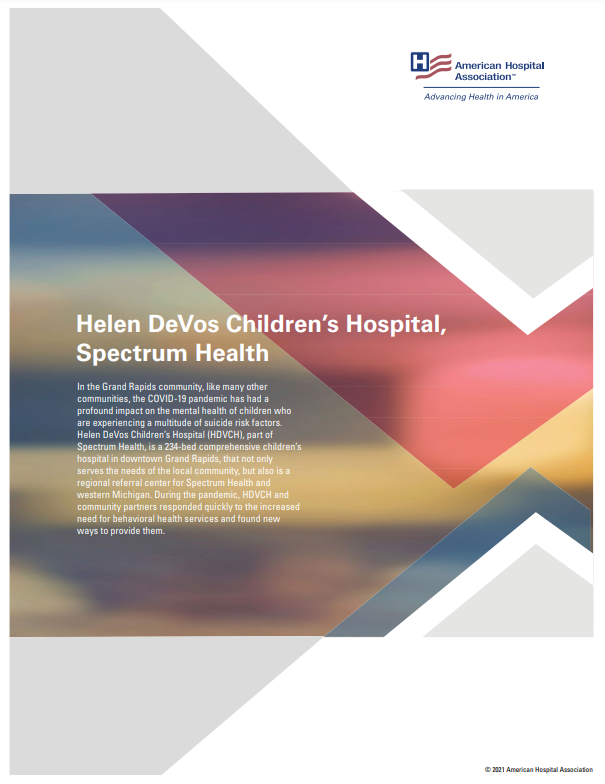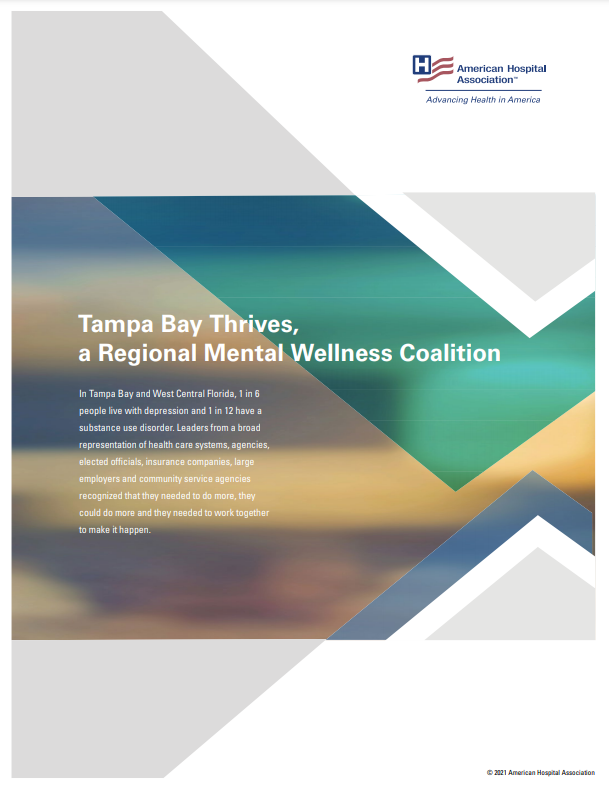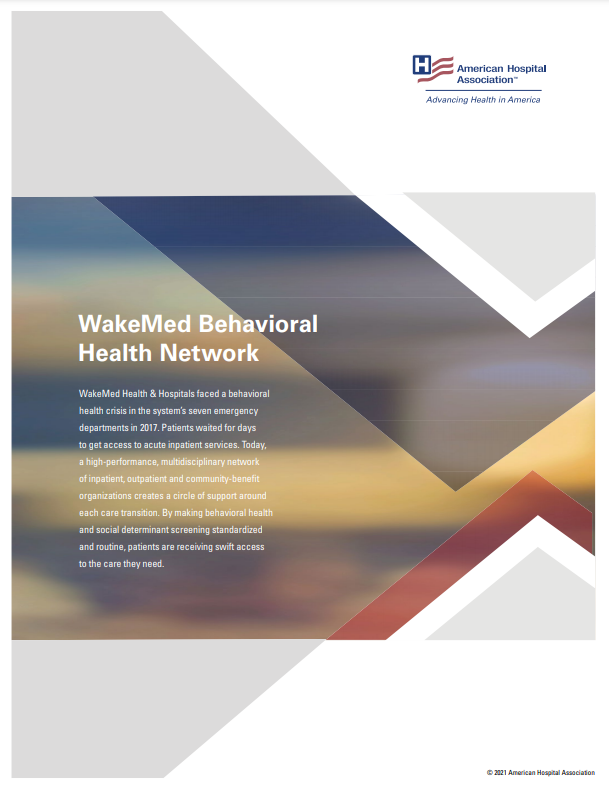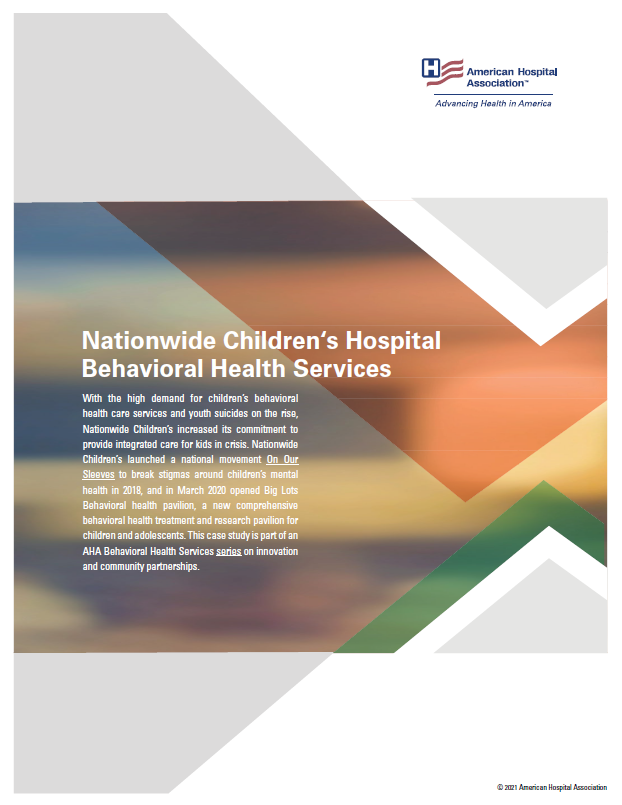Examples from the Field: Regional Networks of Behavioral Health Improving Access to Care
Access to behavioral health care unfortunately remains difficult due to the shortage of providers, stigma, lack of a true connected continuum of care, and more. This series of case studies featuring the innovative work of hospitals and health systems and their community partners, details how creative collaborative solutions can reduce fragmented care, improve outcomes and deliver positive returns on investment in a variety of ways.
Executive Summary: Regional Networks - Improving access to behavioral health services
In December 2019 and January 2020, the AHA conducted in-depth interviews with senior health care and community leaders from a select group of hospitals and health systems across the country. Each organization has a unique community profile, yet all faced a common challenge: meeting the behavioral health care needs of their community. Each had an explicit goal to increase access to and raise awareness of behavioral health care services in their region. In addition, 3 out of 5 organizations included a specific goal to address and improve the social determinants of health for the behavioral health care population in the community.
The initial interviews and follow-up interviews in 2021 identified key characteristics these organizations relied upon to develop and implement an effective regional network of behavioral health care and how the networks pivoted during the COVID-19 pandemic to meet new behavioral health challenges.
This Executive Brief provides an overview of common characteristics of current and emerging regional behavioral health networks across the nation and offers insights for other communities interested in improving access to behavioral health services through community partnerships.
Related: Improving Behavioral Health Through Community Partnerships: A Self-Assessment Checklist
Helen DeVos Children’s Hospital, Spectrum Health
In the Grand Rapids community, like many other communities, the COVID-19 pandemic has had a profound impact on the mental health of children who are experiencing a multitude of suicide risk factors. Helen DeVos Children’s Hospital (HDVCH), part of Spectrum Health, is a 234-bed comprehensive children’s hospital in downtown Grand Rapids, that not only serves the needs of the local community, but also is a regional referral center for Spectrum Health and western Michigan. During the pandemic, HDVCH and community partners responded quickly to the increased need for behavioral health services and found new ways to provide them.
Avera Behavioral Health
Rural areas have the highest rates of suicide and drug overdoses in the nation, according to the Centers for Disease Control and Prevention. Avera Behavioral Health offers a full suite of behavioral health care services including a comprehensive eCARE telehealth solution delivering services in 32 states. Partnering with primary care providers, family members and providers throughout the country via its telepsychiatry network, it serves the behavioral health care needs of rural communities throughout the nation.
Tampa Bay Thrives
In Tampa Bay and West Central Florida, 1 in 6 people live with depression and 1 in 12 have a substance use disorder. Leaders from a broad representation of health care systems, agencies, elected officials, insurance companies, large employers and community service agencies recognized that they needed to do more, they could do more and they needed to work together to make it happen
WakeMed Behavioral Health Network
WakeMed Health & Hospitals faced a behavioral health crisis in the system’s seven emergency departments in 2017. Patients waited for days to get access to acute inpatient services. Today, a high-performance, multidisciplinary network of inpatient, outpatient and community-benefit organizations creates a circle of support around each care transition. By making behavioral health and social determinant screening standardized and routine, patients are receiving swift access to the care they need.
Nationwide Children‘s Hospital Behavioral Health Services
More children and adolescents died by suicide in Franklin County, Ohio, in 2014 than in any year prior. Many people in the community attributed this toll to a lack of access to prevention, early intervention and treatment of behavioral health disorders for children and adolescents. Access to a therapist or psychiatrist often could take months, which is how a children’s hospital emergency department (ED) became a crisis intervention center.


